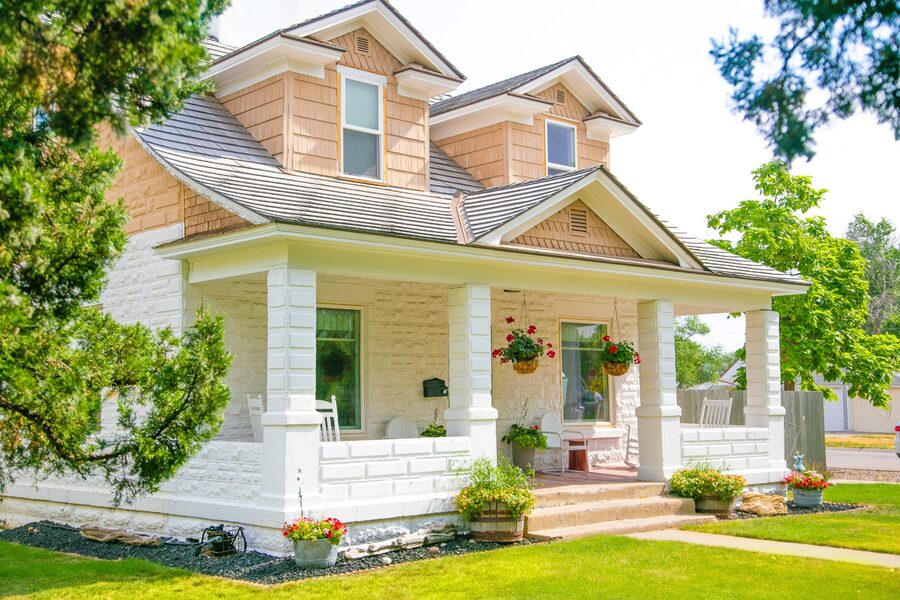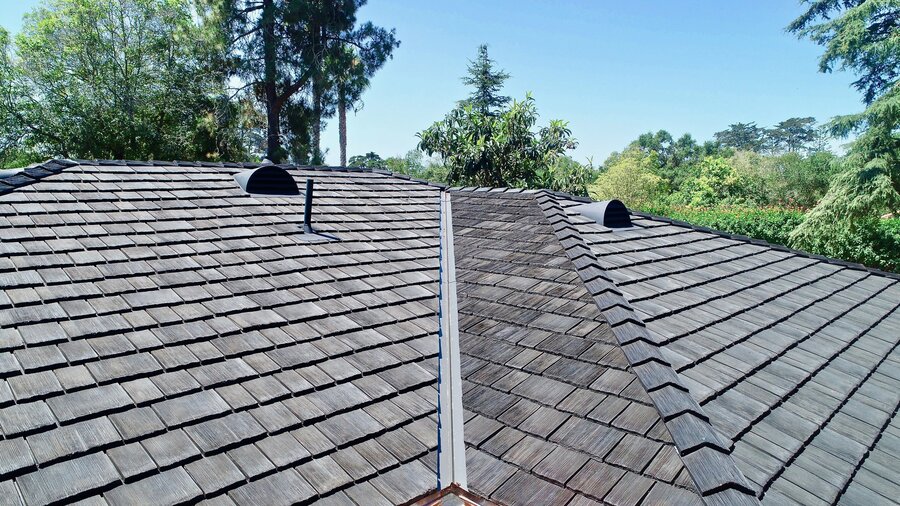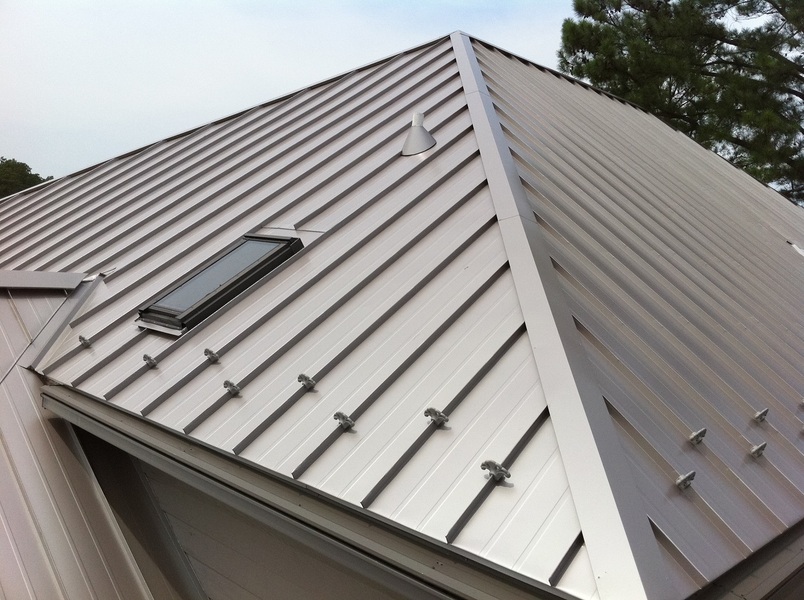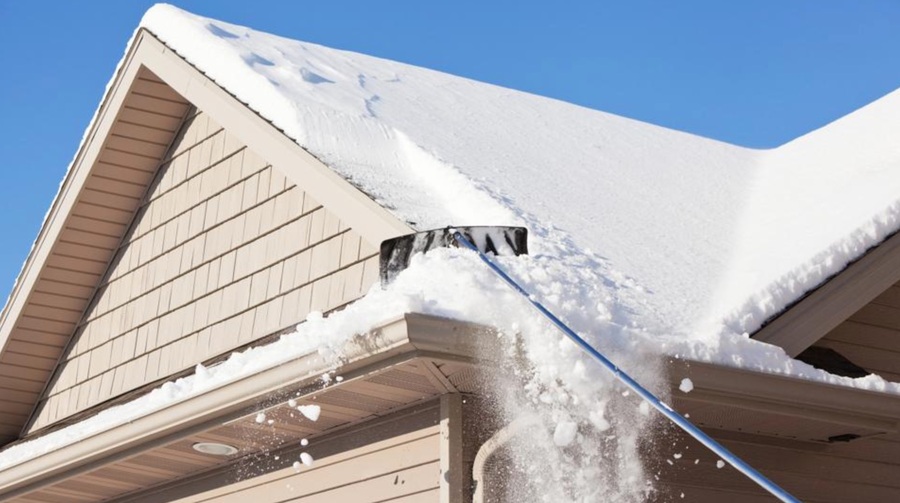A Guide to Proper Roof Ventilation and Its Benefits
A Guide to Proper Roof Ventilation and Its Benefits

Proper roof ventilation is crucial to maintaining a healthy and functional roofing system. It plays a significant role in preserving the structural integrity of your home, increasing energy efficiency, and preventing various problems that can arise from inadequate airflow. In this guide, we will explore the importance of roof ventilation and discuss its benefits for homeowners. If you’re looking for reliable roofing services, Cedar Rapids Roofer is here to help.
What is Roof Ventilation?
Roof ventilation refers to the process of allowing air to circulate freely within the attic space and roof system. It involves the intake of fresh air through vents installed at the lower portion of the roof and the expulsion of stale air through vents placed at the upper portion. The primary purpose of roof ventilation is to maintain a balanced flow of air, preventing heat and moisture buildup that can cause damage to the roofing materials and the overall structure.
The Benefits of Proper Roof Ventilation
Enhanced Energy Efficiency
Proper roof ventilation can significantly improve the energy efficiency of your home. During hot summer months, a well-ventilated roof helps reduce heat buildup in the attic, which can transfer to the living spaces below. This, in turn, reduces the reliance on air conditioning systems and lowers energy costs. Similarly, in colder climates, adequate ventilation helps prevent the buildup of moisture and condensation, reducing the need for excessive heating and potential mold growth.
Extended Roof Lifespan
An overheated or excessively moist attic can cause significant damage to your roof. Heat trapped in the attic can accelerate the aging process of roofing materials, leading to premature deterioration and potential roof failure. On the other hand, moisture buildup can cause rot, mildew, and mold growth, compromising the roof’s structural integrity. Proper roof ventilation helps regulate temperature and moisture levels, extending the lifespan of your roof and saving you from costly repairs or premature replacements.
Prevents Ice Dams
In regions with cold climates, ice dams can pose a serious threat to your roof. Ice dams occur when warm air from the attic melts snow on the roof, refreezing the eaves and causing a barrier that prevents proper drainage. This leads to water seepage under the shingles, potentially causing leaks, water damage, and even structural issues. Adequate roof ventilation helps maintain a consistent temperature throughout the roof, preventing the formation of ice dams and mitigating the associated risks.
Improves Indoor Air Quality
Proper roof ventilation not only benefits the roof but also improves the indoor air quality of your home. Without sufficient airflow, pollutants, allergens, and stale air can accumulate in the attic, leading to poor air quality that can seep into the living spaces below. With adequate ventilation, fresh air is drawn into the attic, diluting and removing pollutants and maintaining a healthier environment for you and your family.
Reduces Moisture-Related Issues
Excessive moisture in the attic can create problems, including mold growth, wood rot, and insulation deterioration. Mold growth poses health risks and can cause damage to your property. Proper roof ventilation helps remove excess moisture, ensuring that your attic remains dry and minimizing the likelihood of these issues. It also aids in preventing the warping or swelling of roof decking and other structural components caused by high humidity levels.
What are the Risks of Improper Roof Ventilation?
Proper roof ventilation is crucial for maintaining the health and integrity of your roofing system. Conversely, improper or inadequate roof ventilation can lead to many problems and risks that can significantly impact your home. Let’s explore some of the risks associated with improper roof ventilation.
Heat Buildup and Energy Inefficiency
One of the primary purposes of roof ventilation is to prevent heat buildup in the attic. Inadequate ventilation traps hot air in the attic, causing temperatures to soar during summer. This excessive heat can transfer to the living spaces below, making your home uncomfortable and leading to increased reliance on air conditioning systems. The result is higher energy bills and reduced energy efficiency. Improper ventilation prevents the escape of hot air and disrupts the balance of temperature regulation in your home.
Moisture Accumulation and Mold Growth
Insufficient roof ventilation can also contribute to moisture-related problems. Without proper airflow, moisture from various sources, such as condensation or roof leaks, can accumulate in the attic. Over time, this trapped moisture can lead to the growth of mold and mildew. Mold growth not only poses health risks but can also cause structural damage to your home and compromise the integrity of the roofing materials. Moisture-related issues can be expensive and may require extensive repairs or roof replacements.
Roof Decking and Shingle Damage
Inadequate ventilation can cause damage to the roof decking and shingles. High temperatures in the attic can accelerate the deterioration of roofing materials, leading to premature aging, warping, and cracking. Additionally, trapped moisture can cause the roof decking to swell, warp, or rot. These issues weaken the roof’s structural integrity and can result in leaks, water damage, and compromised protection against the elements. In extreme cases, it may necessitate a complete roof replacement.
Ice Dams and Water Damage
Improper roof ventilation can contribute to the formation of ice dams, especially in colder climates. Ice dams occur when warm air from the attic melts snow on the roof, refreezing at the eaves and forming a barrier preventing proper drainage. The trapped water can seep under the shingles, causing leaks, and water damage, potentially compromising the roof’s structural integrity. Insufficient ventilation disrupts the temperature balance, preventing the snow from melting evenly and increasing the risk of ice dam formation.
Reduced Lifespan of Roofing Materials
Roofing materials are designed to withstand various environmental conditions, but improper ventilation can significantly shorten their lifespan. Excessive heat, moisture, and other factors caused by inadequate ventilation can accelerate the aging process of the materials, leading to premature deterioration. This can result in the need for frequent repairs and replacements, adding to the overall cost and inconvenience.
The risks of improper roof ventilation are numerous and can have significant consequences for your home. From energy inefficiency and moisture-related issues to roof damage and reduced lifespan of roofing materials, neglecting proper ventilation can lead to costly repairs and compromises to your home’s structural integrity. To mitigate these risks, it is essential to work with a professional roofing company like Cedar Rapids Roofer, who can assess your ventilation needs and provide effective solutions. Investing in proper roof ventilation is an investment in the longevity and health of your roofing system and your home.
Proper roof ventilation is critical to maintaining a healthy and long-lasting roofing system. It offers numerous benefits, including improved energy efficiency, extended roof lifespan, prevention of ice dams, improved indoor air quality, and reduced moisture-related issues.
Working with a reputable roofing company like Cedar Rapids Roofer is essential to ensure that your roof is adequately ventilated. Their experienced professionals can assess your ventilation needs and provide practical solutions to optimize the performance and durability of your roof. Don’t overlook the importance of roof ventilation—investing in it now will save you time, money, and headaches in the long run.
Key Takeaways:
- Proper roof ventilation is crucial for maintaining a healthy and functional roofing system.
- Adequate ventilation enhances energy efficiency by reducing heat buildup and lowering reliance on air conditioning systems.
- Proper roof ventilation extends the roof’s lifespan by preventing premature deterioration caused by excessive heat or moisture.
- It helps prevent ice dams, which can lead to leaks and water damage.
- Adequate roof ventilation improves indoor air quality by removing pollutants and stale air from the attic.
- It reduces moisture-related issues such as mold growth, wood rot, and insulation damage.
- Inadequate roof ventilation can result in heat buildup, energy inefficiency, and higher energy costs.
- Improper ventilation contributes to moisture accumulation, mold growth, and structural damage.
- It can cause damage to roof decking and shingles, leading to leaks and compromised protection.
- In colder climates, improper ventilation increases the risk of ice dam formation and subsequent water damage.
- Roofing materials have a reduced lifespan when ventilation is inadequate.
- Consulting a professional roofing company like Cedar Rapids Roofer is essential to ensure proper roof ventilation and mitigate risks.





